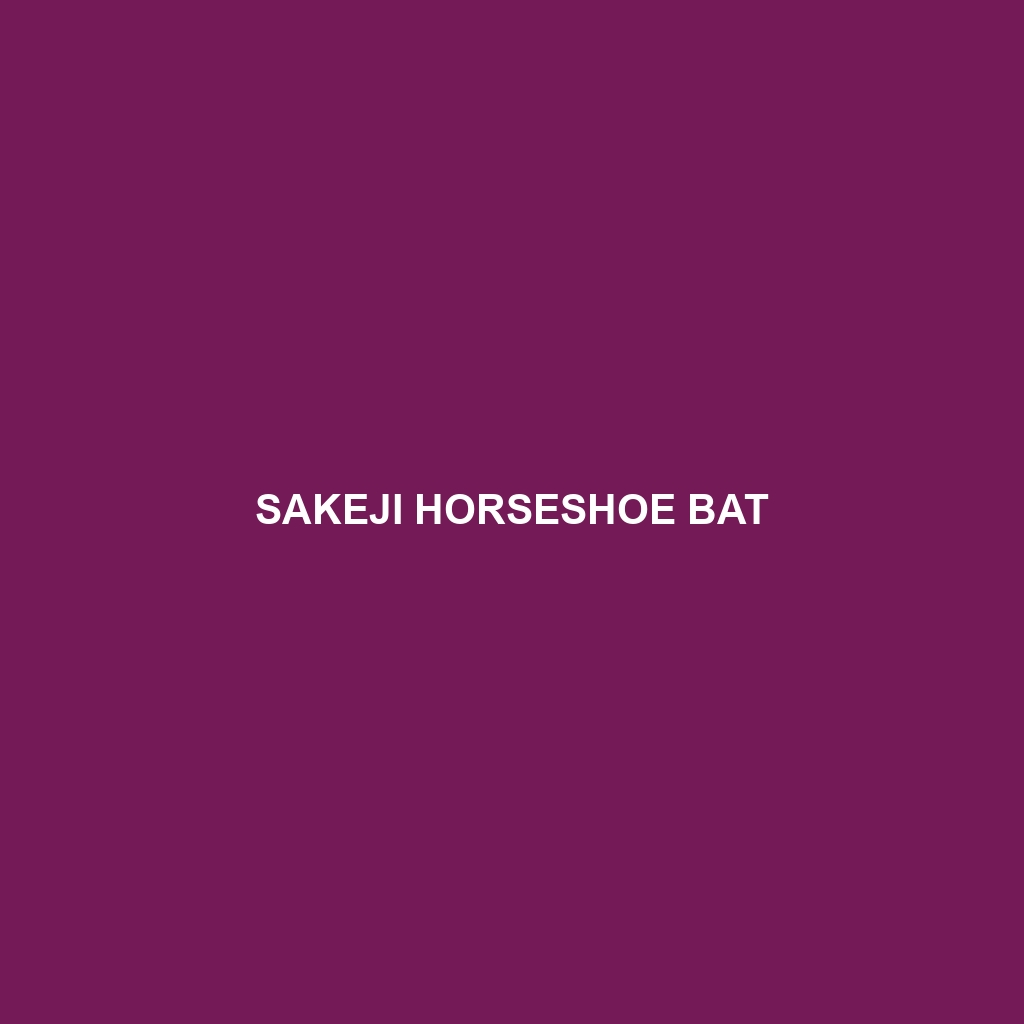Common Name: Ruwenzori Horseshoe Bat
Scientific Name: Rhinolophus ruwenzoricus
Habitat:
The Ruwenzori Horseshoe Bat is primarily found in the mountainous regions of East Africa, including the Ruwenzori Mountains that straddle the border of Uganda and the Democratic Republic of Congo. This bat favors moist montane forests and lush woodlands, generally residing in elevations between 2,000 to 4,000 meters above sea level. Additionally, these bats can be seen in caves and rock crevices that provide a stable microclimate.
Physical Characteristics:
The Ruwenzori Horseshoe Bat typically measures about 6 to 8 centimeters in body length, with a wingspan reaching up to 28 centimeters. Its fur is dense and varies in color from dark brown to grayish, often with a lighter underside. This species exhibits a distinctive horseshoe-shaped noseleaf, which is crucial for echolocation. Its ears are large and rounded, further aiding its navigation in dimly lit forest habitats.
Behavior:
Ruwenzori Horseshoe Bats are primarily nocturnal, emerging at dusk to forage for insects. They are known for their unique roosting habits, often found in small colonies. During the day, they often hide in secluded locations, such as tree hollows or under leaves, to evade predators. Their echolocation capabilities allow them to detect prey in complete darkness, making them highly skilled hunters.
Diet:
The diet of the Ruwenzori Horseshoe Bat mainly consists of moths, beetles, and other flying insects. They are considered insectivorous bats, employing echolocation to capture prey mid-flight. Their feeding habits are integral to controlling insect populations in their habitats, thereby maintaining ecological balance.
Reproduction:
Ruwenzori Horseshoe Bats generally breed once a year, with the mating season occurring in late summer. Females give birth to one or two pups after a gestation period of approximately 2 to 3 months. The mother nurses her young for several weeks, during which time the pups learn to fly and foraging techniques.
Conservation Status:
The Ruwenzori Horseshoe Bat is currently listed as vulnerable by the International Union for Conservation of Nature (IUCN). Habitat loss due to deforestation and climate change poses significant threats to their populations. Preservation of their natural habitat is crucial for their survival.
Interesting Facts:
One fascinating fact about the Ruwenzori Horseshoe Bat is its exceptional ability to navigate using echolocation, which allows it to detect objects and prey in total darkness with high precision. Furthermore, their involvement in pollination may contribute to the biodiversity of the ecosystems they inhabit.
Role in Ecosystem:
Ruwenzori Horseshoe Bats play a vital role in their ecosystem as natural pest controllers. By feeding on a variety of insects, they help to maintain insect population levels and contribute to the health of their habitats. Their presence signifies a balanced ecosystem that supports various plant and animal species.
